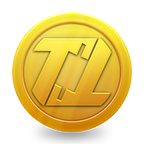Options Theory: How to Hedge a Naked Put
We’ve explored the What, Why, and When of hedging. And that leaves us with the How which, admittedly, is a big topic because the way that you go about hedging varies depending on what your strategy is. For example, the method for hedging a long call option is different than that of a bull put spread or a covered call.
While we may eventually get around to discussing them all, I wanted to begin with a simple one — the Naked Put. To make this as realistic as possible let’s use General Motors (GM) which currently has a nice potential pullback setup to its rising 50-day moving average. At $42, it’s also cheap enough to consider selling a put since the margin requirement will be small. Finally, GM boasts an implied volatility rank of 51% so its option premiums are ripe for the selling.
Imagine we sell the Dec (38 day) $40 put for 66 cents. The put has a 30 delta right now. Here is the initial risk graph with the trade details displayed on the right hand side. Every number is important, but pay particular attention to the breakeven which is $39.34.
Now, suppose GM shares bite the dust and the stock falls from $42 to $41 and finally to our short strike of $40. Since the naked put is bullish we need to add a bearish trade to hedge. To maintain our short premium, positive theta posture, selling a naked call is a logical hedge to use. I would stick to the same month as the put (December) and shoot for a similar delta and credit. That means we’d look to sell an OTM call with a delta around 30 or less for approximately 66 cents or so. Personally, I’d go as low as a 20 delta as long as I can still get around 50 cents.
What we want to avoid is hedging a 30 delta put that provided a 66 cent credit with a 10 delta call that only provides 15 cents credit. That would make the trade entirely too lopsided.
Suppose when GM hits $40 we sell the Dec $42 call for 60 cents. Doing so morphs our trade into a short strangle, specifically a Dec $40/$42 strangle for a total credit of $1.26. The 60 cents captured from the call will reduce our downside risk slightly as well as lower the overall breakeven. Perhaps the best way to illustrate is to show an overlay of the original naked put risk graph with the new short strangle.
As labeled, the blue graph represents the naked put and the magenta graph represents the short strangle. You may have to study the picture for a minute to understand what you’re looking at. Here are the three key impacts of the hedge:
First, the downside breakeven shifts from $39.34 to $38.73. That means GM can now fall further at expiration before we lose on the overall position (see white arrow).
Second, the overall credit (i.e. potential profit) in the trade increases from 66 cents to $1.26 (see yellow arrow).
Third, the trade-off for the previous two benefits is that you now have upside risk. If GM bounces back, rallying above $42.60 then we would have been better off by not adding the short call (see red circle).
The best case scenario after adding the short Dec $42 call as a hedge is to have GM rise gradually back toward $41 or so. In that scenario you will end up capturing a profit on the initial naked put and the hedge. Arguably the most frustrating outcome would be a strong rebound. There’s nothing worse than getting snookered into a short call right before the stock finally rallies.
Another way to illustrate the impact of adding the short call to hedge is to view the profit zone on the actual price chart. Here is GM at trade entry with the naked put.
And here is what happens when we add the short Dec $42 call to convertthe trade into a strangle:
Notice how we shift the downside breakeven lower providing a wider profit range on the lower end. The trade-off is we now have an upside breakeven so GM can’t really back too far or we risk losing on the top side.
There are myriad ways to manage the strangle, but the ideal outcome is to have GM rally back toward $41 or so allowing us to buyback both the short call and put at a profit.
